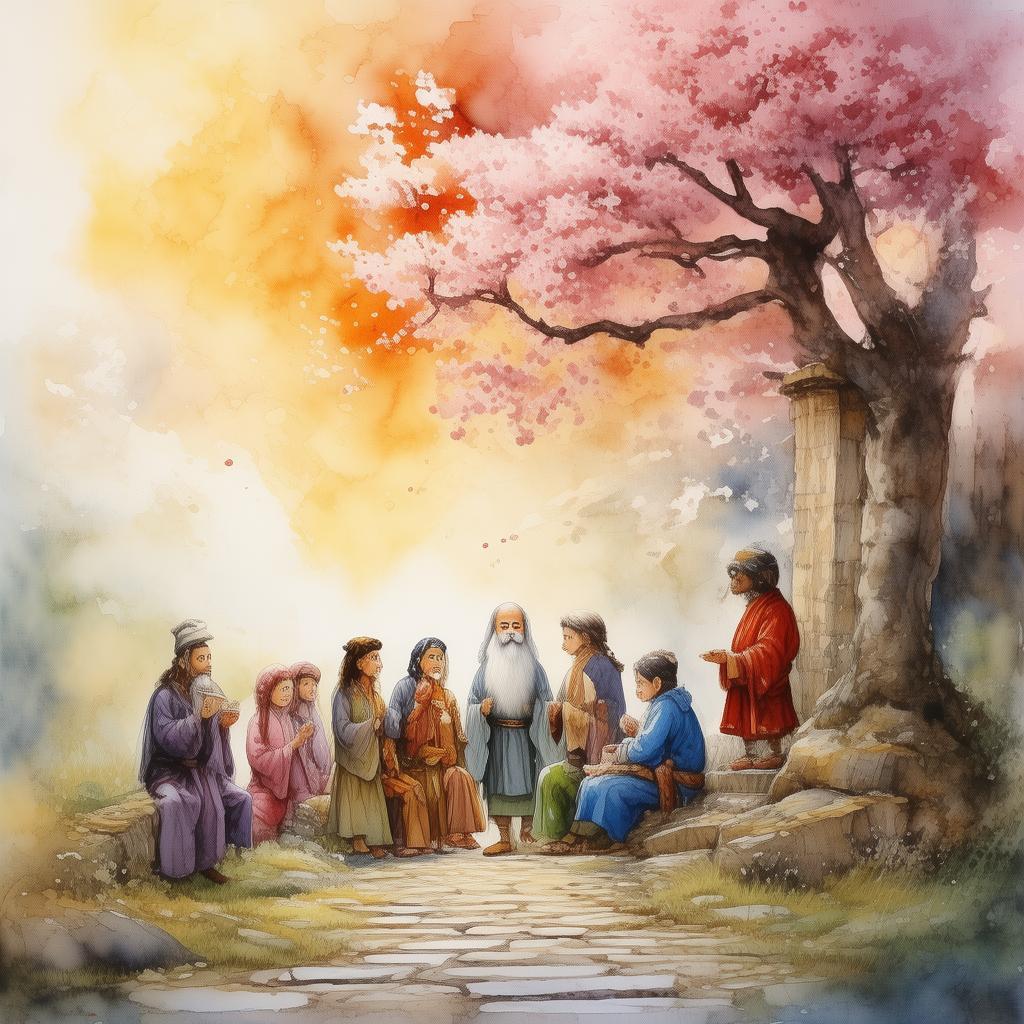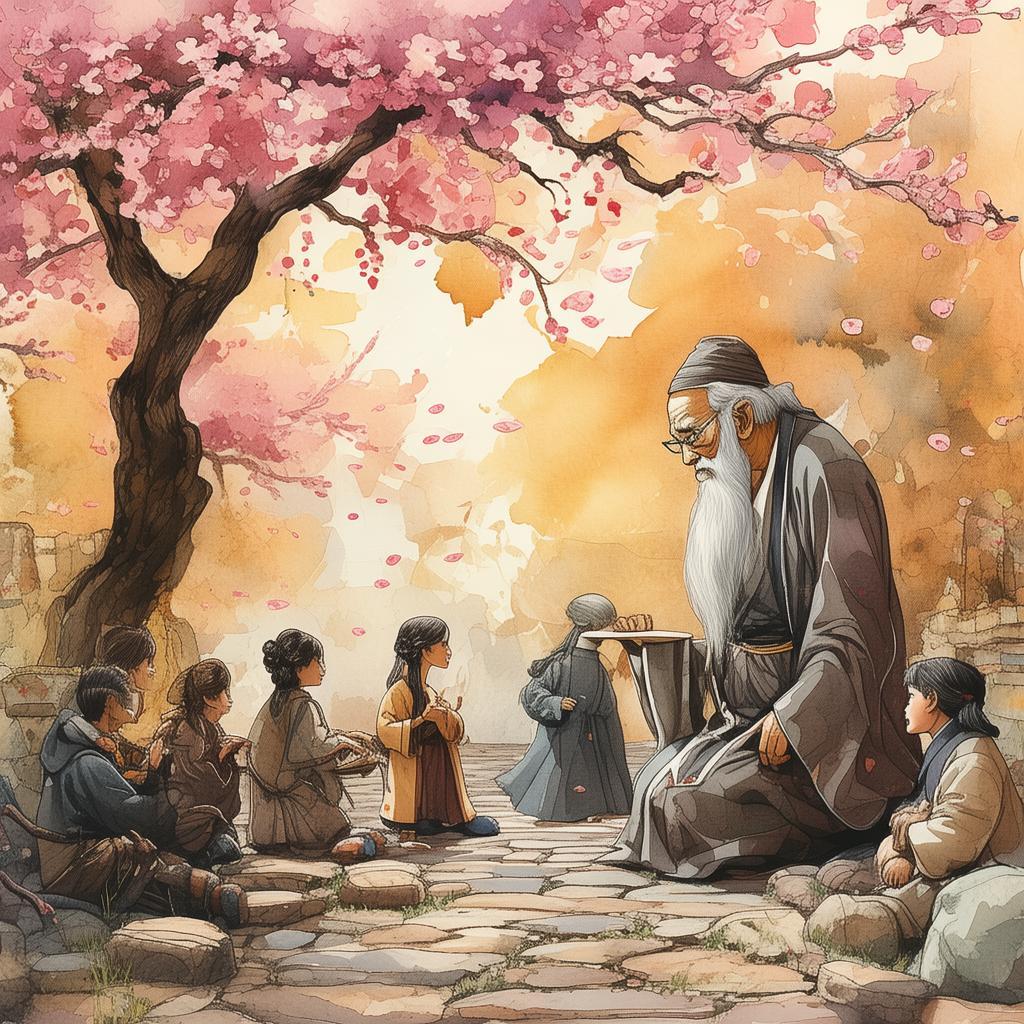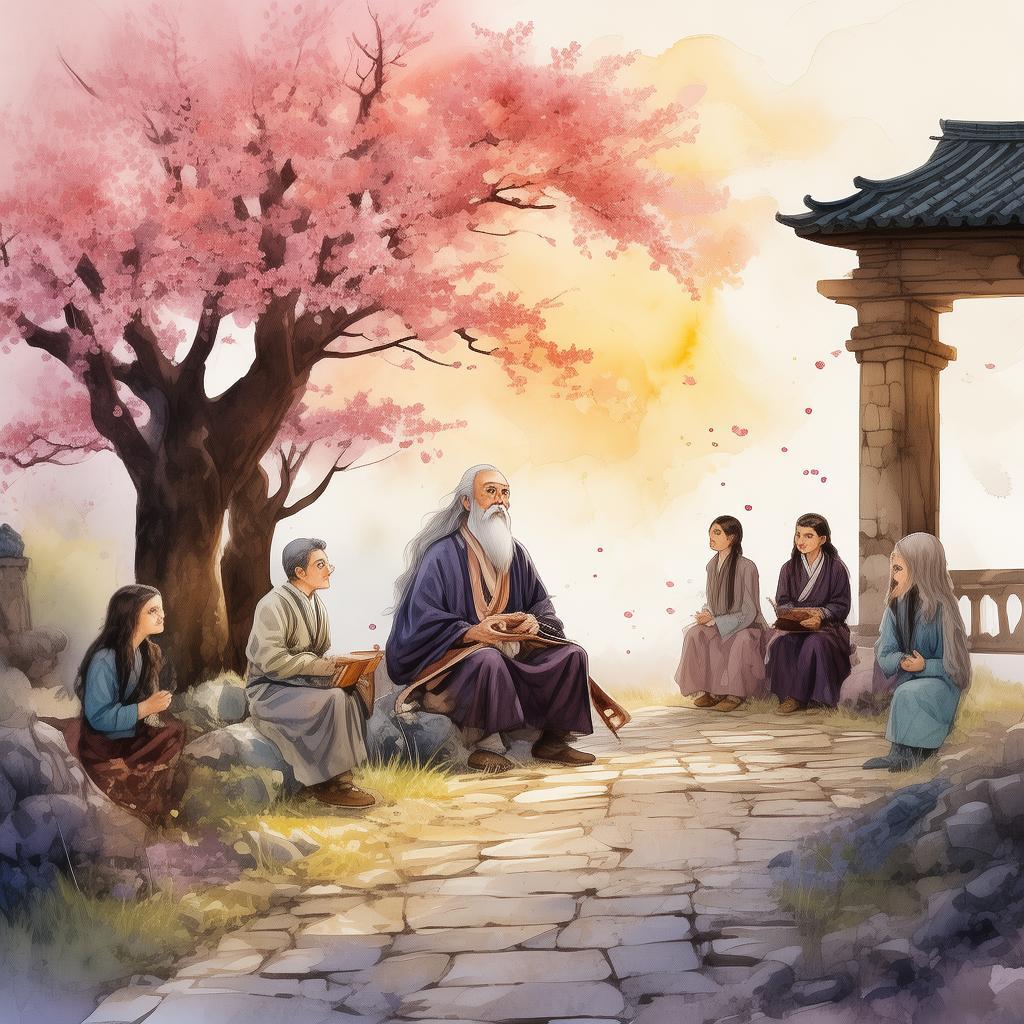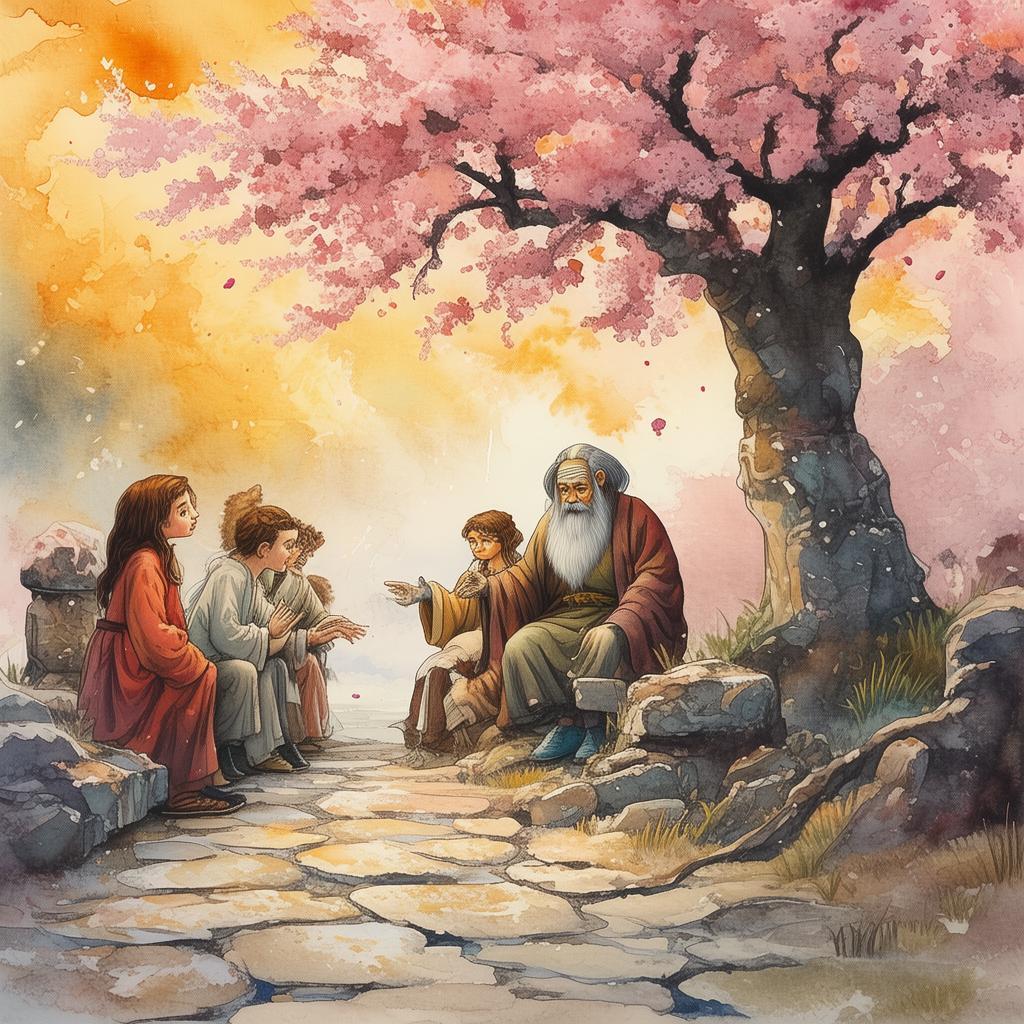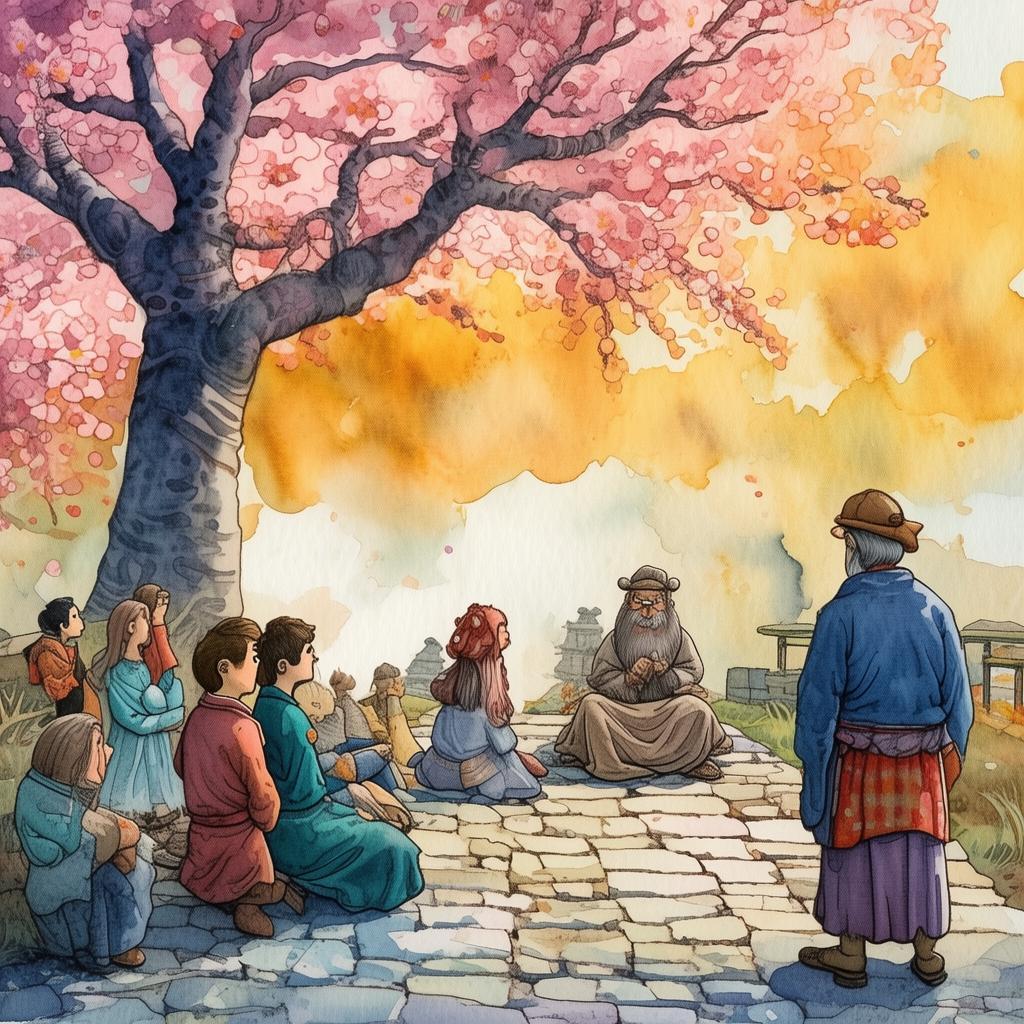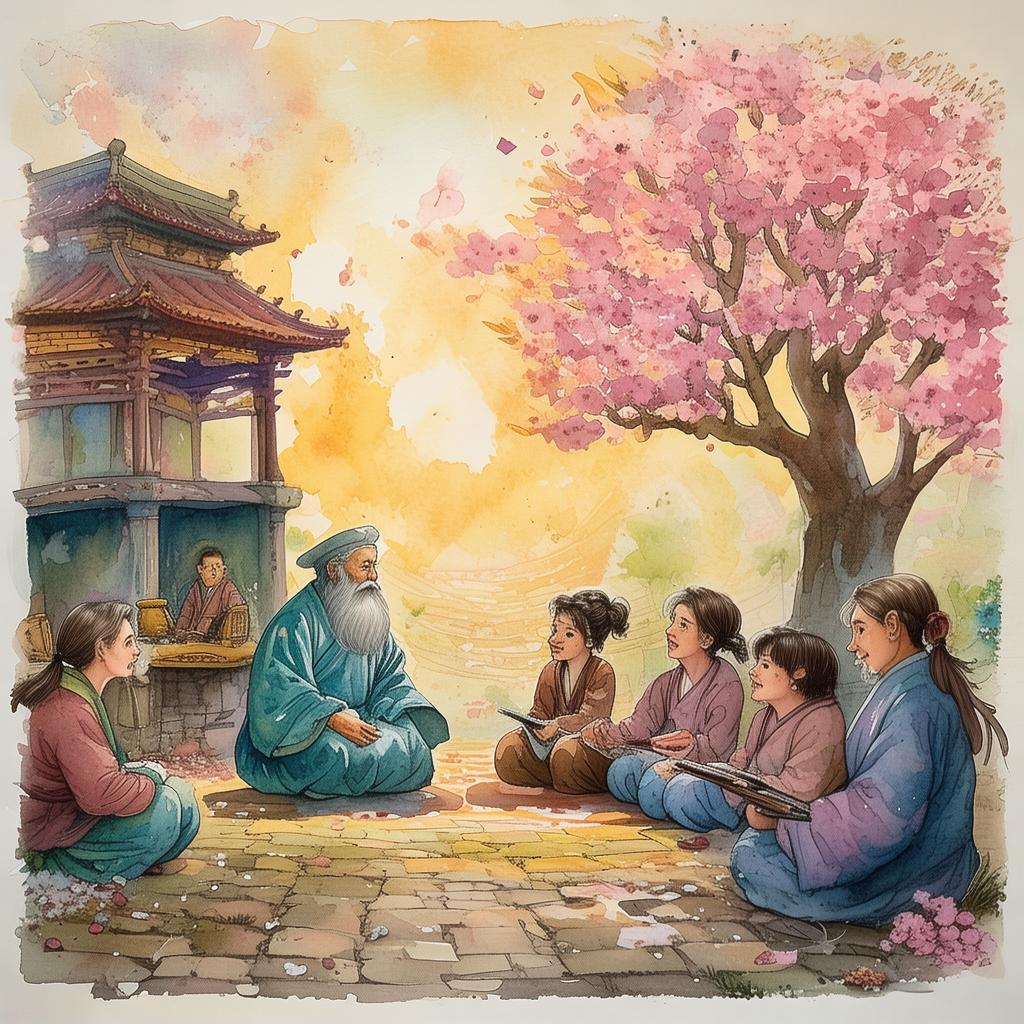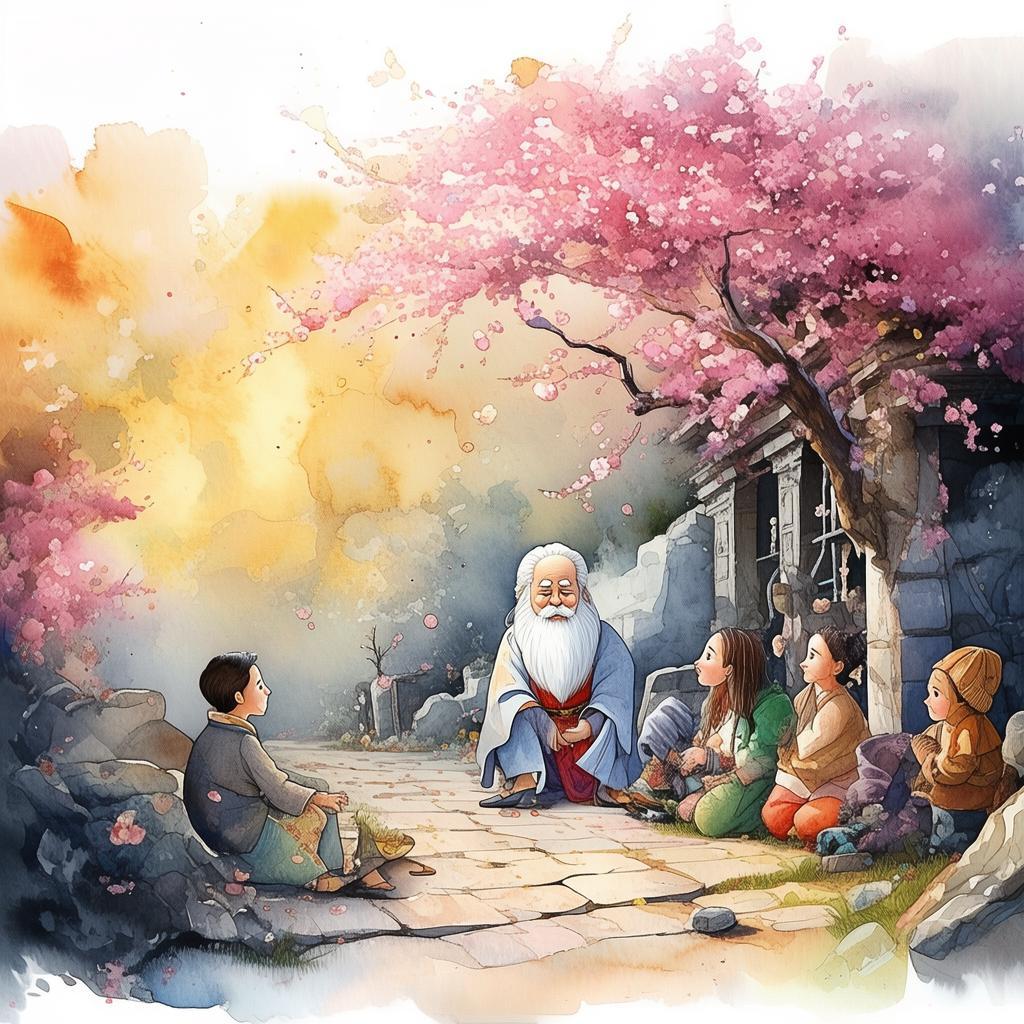The Accordion's Melody: A Tale of Harmonious Redemption
In the heart of a quaint village nestled between rolling hills and whispering forests, there lived a man named Lao Li. Lao Li was known far and wide for his deft fingers that danced across the keys of his cherished accordion, a instrument that seemed to have a life of its own. His music was as unique as the notes he played, each one a story waiting to be told.
Lao Li's accordion had been his companion since his youth, when he learned to play it from his late father, a wandering musician whose melodies were as much a part of the village as the seasons themselves. The accordion was a bridge between Lao Li's past and his future, a symbol of the love and laughter that had filled his childhood home.
The village was a tapestry of laughter and sorrow, of love and loss, and Lao Li's accordion was the thread that wove these threads together. His music was a reflection of the community's spirit, and it was this spirit that he sought to preserve through his art.
One summer's day, as the sun hung lazily in the sky, casting a golden glow over the village, Lao Li played a tune that resonated with the hearts of all who heard it. It was a melody of love, one that spoke of a forbidden romance between a young villager named Mei and a city boy named Chen, who had come to the village for a summer of peace and quiet.
As the days passed, Mei and Chen's love blossomed, their hearts beating in harmony with the rhythm of Lao Li's accordion. But their love was not to be, for Chen had to return to the city, and Mei was left behind, her heart heavy with the weight of separation.
The music of Lao Li's accordion became a bittersweet reminder of what they had lost. His fingers danced over the keys, creating a symphony of longing and sorrow. It was during this time that Lao Li discovered a new melody, one that spoke of loss and redemption, of heartache and healing.
He played this melody for the first time at a village festival, and it captivated the crowd. It was a powerful piece, one that seemed to reach into the very soul of those who listened. It was as if the music itself was trying to convey a message, a message of hope amidst the pain.
Years passed, and the love between Mei and Chen faded into memory. Lao Li's accordion remained a silent witness to the changing seasons and the lives of the villagers. But his music never lost its power to touch hearts.
Then, one day, a young woman named Xiao Mei came to the village. She was a musician, like Lao Li, and she brought with her a sense of purpose and a love for music that was as infectious as it was inspiring. She heard Lao Li's accordion playing one evening and was immediately drawn to its haunting beauty.
Xiao Mei approached Lao Li and struck up a conversation. They found that they shared a deep passion for music and a desire to keep the spirit of the village alive through their art. Together, they began to create new melodies, blending Lao Li's traditional music with Xiao Mei's contemporary style.
One evening, as the village gathered to listen to their music, Lao Li played the melody of loss and redemption once more. This time, it was different. The notes seemed to carry a new meaning, a message of hope and healing. The villagers were moved to tears, their hearts finding solace in the music's embrace.
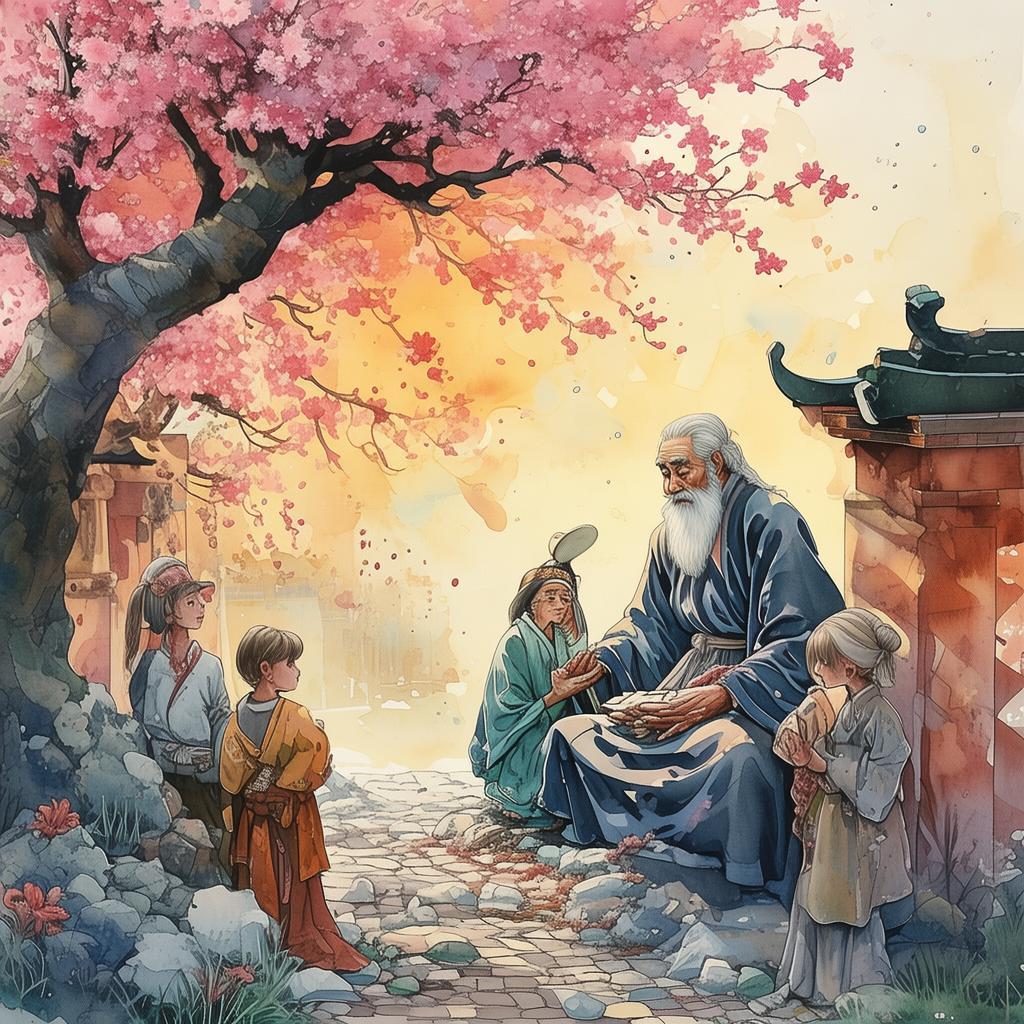
In that moment, Lao Li realized that his accordion was more than just an instrument; it was a vessel for the stories of the village, a symbol of the community's resilience and love. And as he played, he knew that the melody of harmony was one that would never fade.
The story of Lao Li's accordion spread throughout the land, a tale of love, laughter, and redemption. And in every village where the music was heard, it reminded people of the power of harmony, the beauty of community, and the enduring strength of the human spirit.
And so, the accordion's melody continued to play, echoing through the years, a testament to the fact that even in the darkest of times, love and laughter can find a way to shine through.
✨ Original Statement ✨
All articles published on this website (including but not limited to text, images, videos, and other content) are original or authorized for reposting and are protected by relevant laws. Without the explicit written permission of this website, no individual or organization may copy, modify, repost, or use the content for commercial purposes.
If you need to quote or cooperate, please contact this site for authorization. We reserve the right to pursue legal responsibility for any unauthorized use.
Hereby declared.
